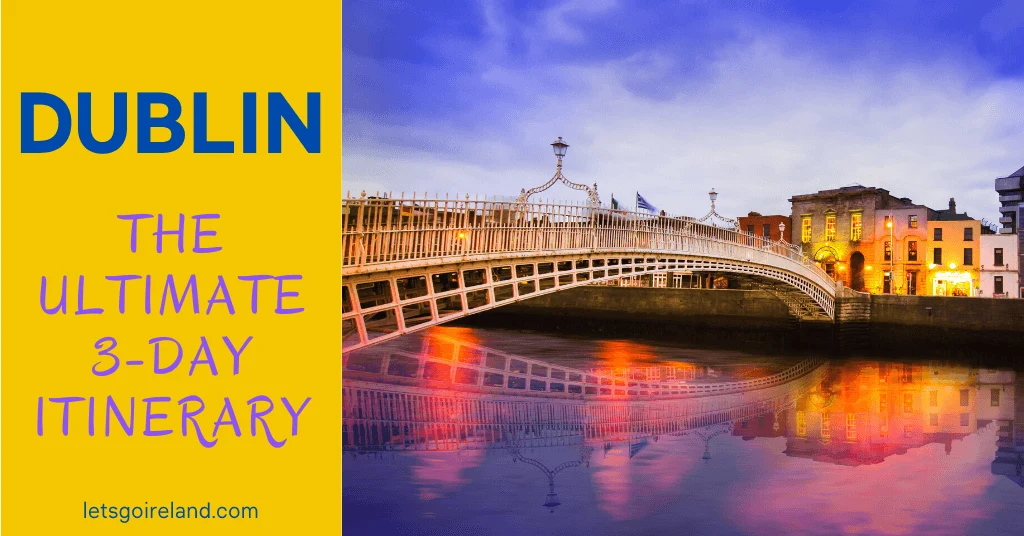
In a nutshell, this is the perfect list if you want skim all the best bits of Dublin. Here you will find our top 8 must-see attractions during a 3-day stay.
We are often asked by friends to recommend things to do and see for short trips to Dublin. This can be tricky as any list of recommendations is of course subjective.
We devised a list based on the idea that the tourist only has about 2-3 days in Dublin, doesn’t know the city and its history all that well and would like to experience the “essence” or the highlights of Dublin.
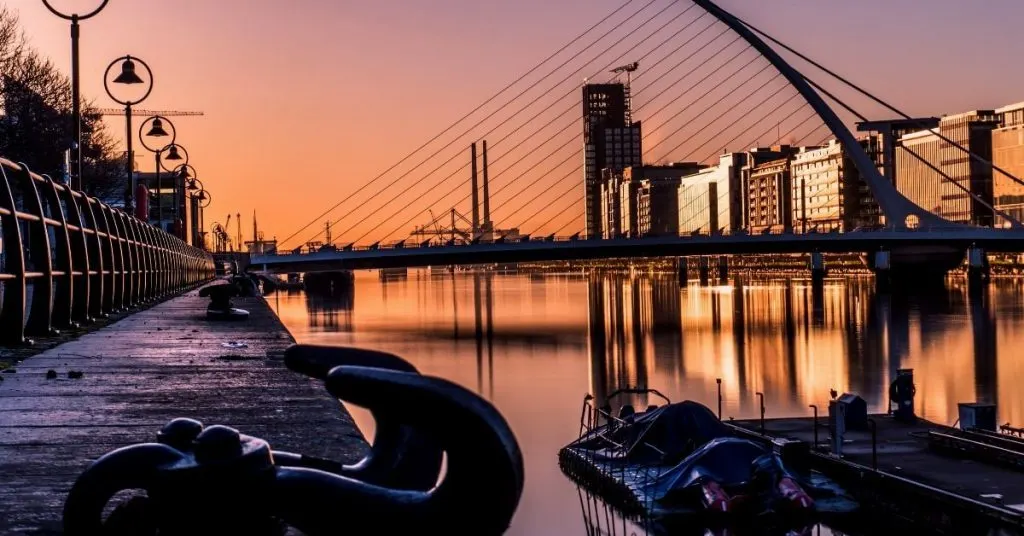
If this is the case for you, then check out these 9 unusual sights. This does not mean that these are our favorite sights (which you can find here), attractions or places of interest by any means.
They are also not insider tips. In our opinion, however, these sights are the ones that most characterize Dublin city and all aspects of Dublin life, culture and history.
A realistic tour of all 8 attractions in this itinerary would take about 3 days (don’t forget that big attractions in a city cost time and energy!).
This way you have enough time to enjoy the main sights and get a feel for Dublin as a unique European capital city.
Table of Contents
Guinness Storehouse
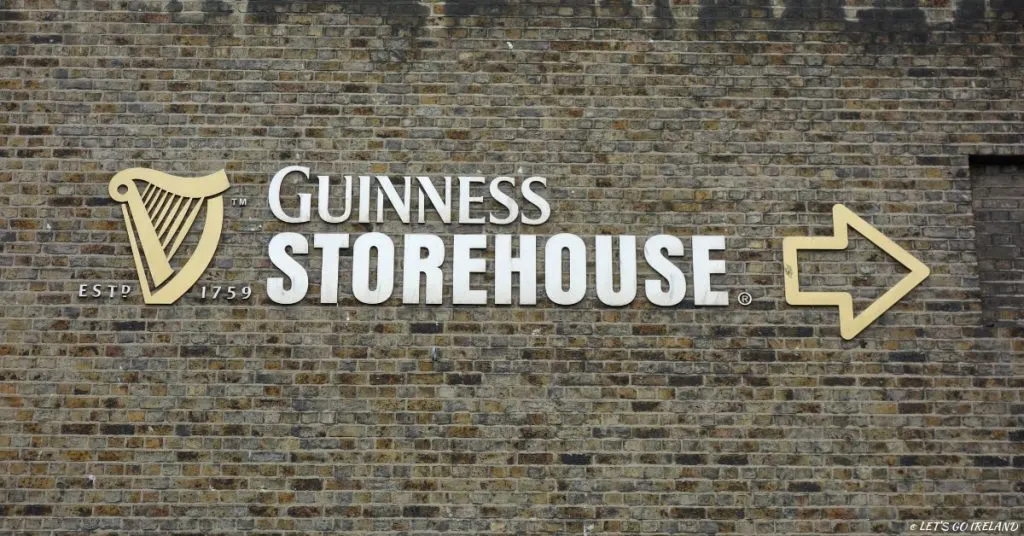
Guinness is the beer of Ireland and Dublin. You could almost say it’s the national beer of the Irish.
What is particularly special is that it is still brewed at St. James’s Gate in Dublin and has been around since 1759 (when Arthur Guinness himself was in charge).
Looking for more information about Dublin? Check out these posts:
- Dublin’s best kept secrets – Ireland’s capital’s hidden gems
- Unusual Dublin – These sights are truly special to Dublin
- The Best Parks in Dublin
Here comes the warning: The tour of the Guinness Storehouse is not exactly cheap.
But it is really an experience as you can learn about the brewing, history and worldwide marketing success of Guinness.
(For health and safety reasons though, you are not able to actually see the brewing process.)
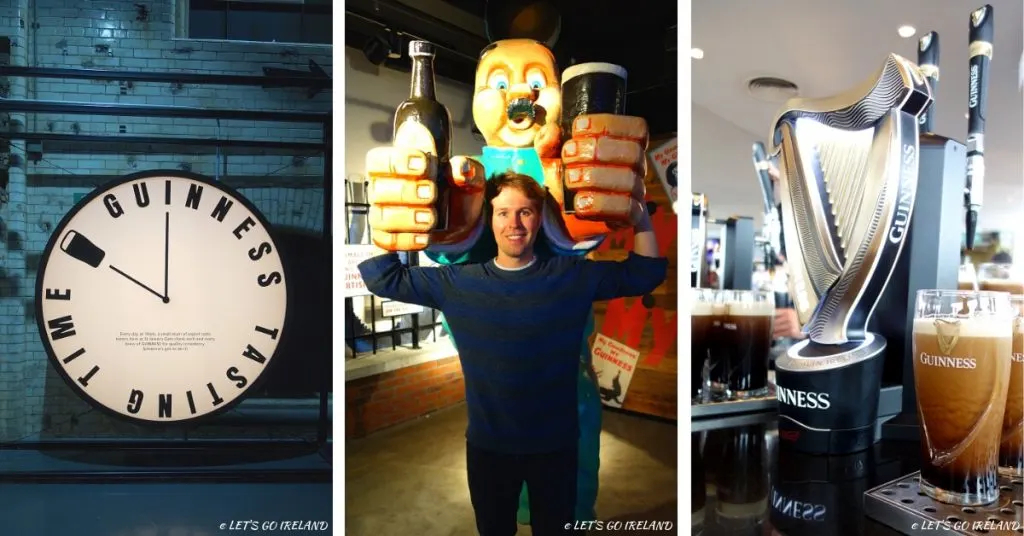
Awaken your senses during the Guinness tasting experience and as a treat at the end, you can enjoy a complimentary pint of Guinness freshly pulled in the Gravity Bar (or a Lager beer if you do not like the dark, malty taste of Guinness).
While enjoying the perfect pint at the top of the building, you can also savor the overwhelming 360° panoramic view of the rooftops of Dublin.
This is definitely one of the best views of Dublin that you are likely to see!
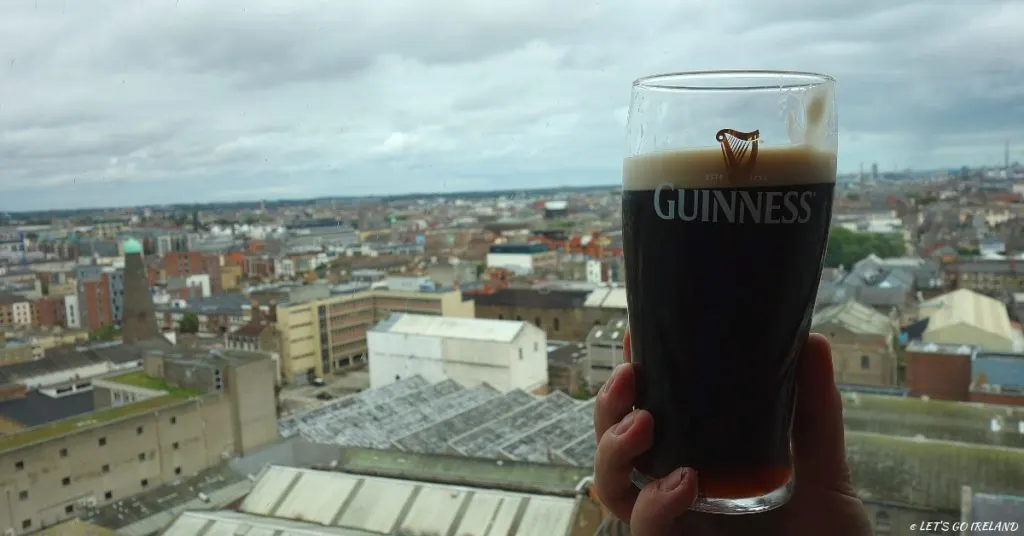
I have often been asked if this is a “tourist rip-off”. It is hard to give a concise answer.
On the one hand the Guinness Storehouse Dublin is a very well-made interactive exhibition spread over seven floors, and you certainly get a lot for your money.
On the other hand, Guinness has obviously established itself as the world-famous brand of Ireland and can afford to charge a high price.
Therefore, our conclusion: If you are ever in Dublin and your wallet allows it, you should plan a visit. For us it is a must-do!

Expert tips: The Guinness Storehouse is very popular with tourists and is in fact Ireland’s most popular tourist attraction. When planning a visit, it is best to book the tickets online beforehand.
Firstly, they are at a slightly discounted price, and secondly, you can get in via the “fast lane”. T
his saves you a lot of time (which on a short break is particularly important!). It is also advisable to book a slot in the morning during the week. You can immediately book your tour here.
Book of Kells and Trinity College Old Library
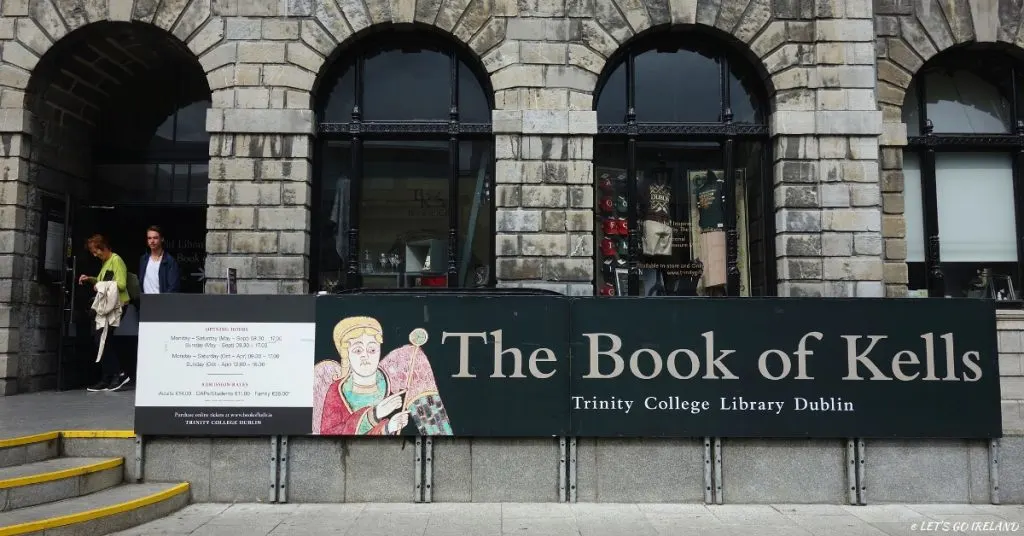
It is Ireland’s oldest university and is a charming attraction in its own right with its the cobble-stoned squares and spacious gardens right in Dublin city center.
It is fair to say that the Book of Kells is the most important illustrated manuscript in Ireland.
The manuscript was created by Celtic monks in the 8th or 9th century using the most meticulous craftsmanship and illuminates the 4 Gospels of the Evangelists.
The cover page of each of the Gospels, as well as the most famous Chi-Rho page are particularly ornately illustrated.
The vibrant, Celtic patterns created on vellum are a testament to the skills of the monks, especially given the conditions under which they were produced.

Even if you have no relation to ancient book art or the Bible, the Book of Kells is a unique masterpiece of medieval artistry and therefore a very worthwhile sight to see.
I studied at Trinity College Dublin for a while and as a student I was therefore able to visit the Book of Kells at any time for free.
I did this about once a month, because a different page is shown every month or so (that’s why some people in Dublin call the Book of Kells the “Page of Kells”).
Regardless of which page you marvel at, the exhibition “Darkness into Light” documenting the exciting history of the book and book art is well worth the visit and gives very interesting insights into Irish life during the Middle Ages.
A great bonus is the visit to the Old Library of Trinity College Dublin, which is included in the ticket price. The so-called Long Room is a library of the early 18th century with very striking architecture.
The wooden, barrel vaulted hall lined with bookshelves on both sides impresses both with its height and length.
In addition, busts of scholars are exhibited in front of the bookshelves and one can admire the oldest harp in Ireland.
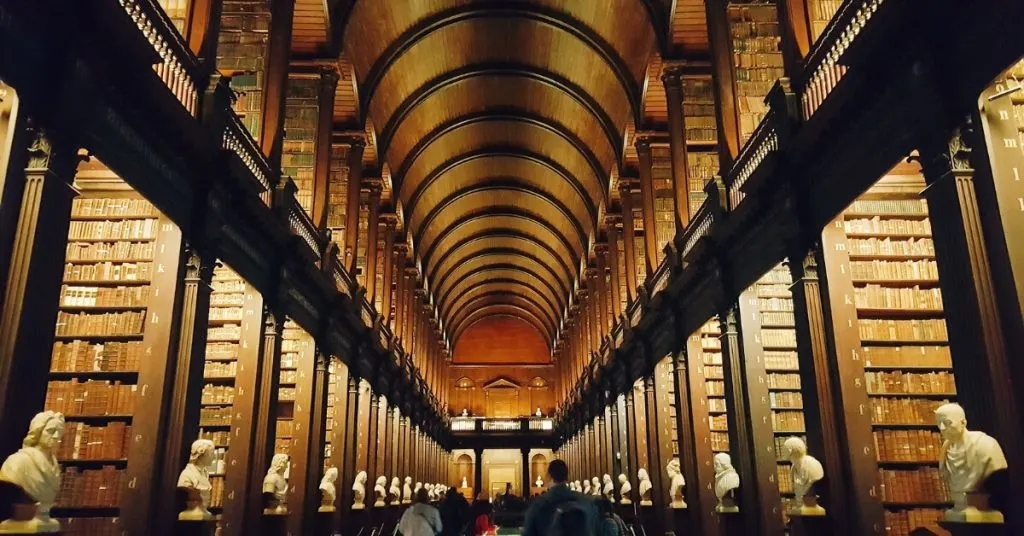
The library is so breathtaking that it must have given even the creator of Star Wars, George Lucas, a lasting impression.
It can be said that the Jedi archive in Star Wars Episode II bears has a striking resemblance to the Long Room.
If you want to know more about Star Wars in Ireland, check our post here.
Anyway, the walk through this imposing old library is a treat!
This double whammy of great attractions are a highlight on every Dublin visit!
By the way, you can book tickets in advance and avoid the really long queues!
Budget tip: Students or alumni of Trinity College have free admission to the Book of Kells for life. Plus, they can bring up to 3 people along with them to see the exhibition for free.
If you are really tight on cash, then perhaps you might try to befriend a nice Trinity student and ask them nicely into bringing you into the exhibition for free in return for a pint! You never know, it might work!
National Gallery of Ireland
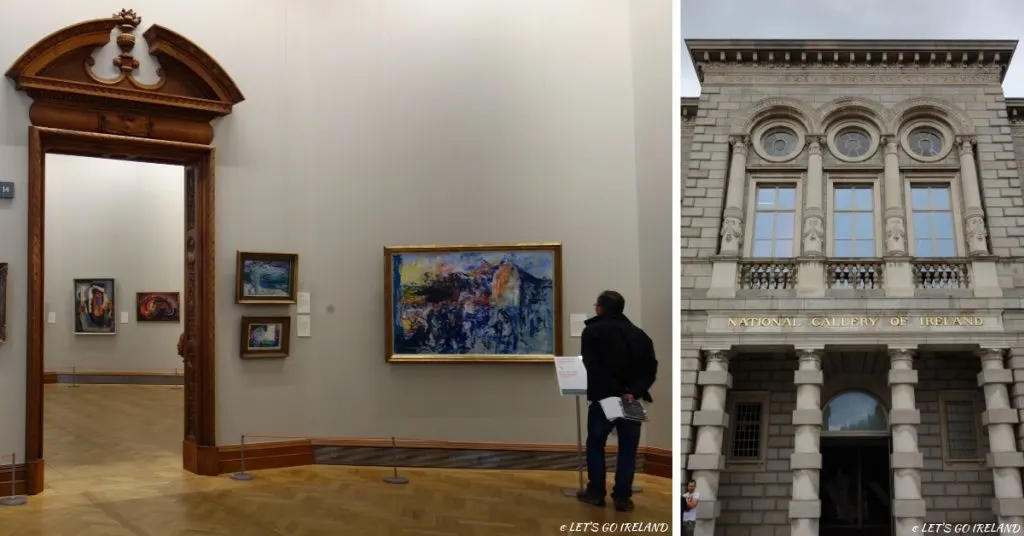
The National Gallery of Ireland is home to Ireland’s most impressive art collection and an added bonus is that admission to the permanent exhibition is completely free (donations are appreciated though).
Since the National Gallery is very centrally located (right between Merrion Square West and Trinity College), you can just pop in for a half an hour and enjoy the tranquility of the art gallery (or shelter from the rain or use the facilities…) before you go back to the bustle of the city.
The National Gallery is open every day of the week (Tuesdays through Saturdays from 9.15 am to 5.30 pm (Thursdays even until 8.30 pm!), Sundays and Mondays from 11.00 am to 5.30 pm).
The collection spans three levels, with Level 1 being particularly important for anyone interested in Irish art.
Two of my favorite Irish artists are Jack B. Yeats and Harry Clarke, both of whom are well represented here. (Harry Clarke’s amazing stain glass compositions must be seen!)
Looking for more information about visiting Ireland? Check out these posts:
- The Ultimate Ireland Guide to Harry Potter
- 6 Reasons why you should explore the Wild Atlantic Way
- What is Ireland known for? The ultimate list
Lovers of international art will also be impressed with works by Caravaggio, Monet, Picasso, Rembrandt, Turner, Velázquez and Vermeer.
Without a doubt, the gallery is a worthwhile stop on any itinerary.
In addition, you can buy nice souvenirs in the gallery shop and treat yourself to a refreshment in the café in the Millennium Wing of the gallery.
Temple Bar
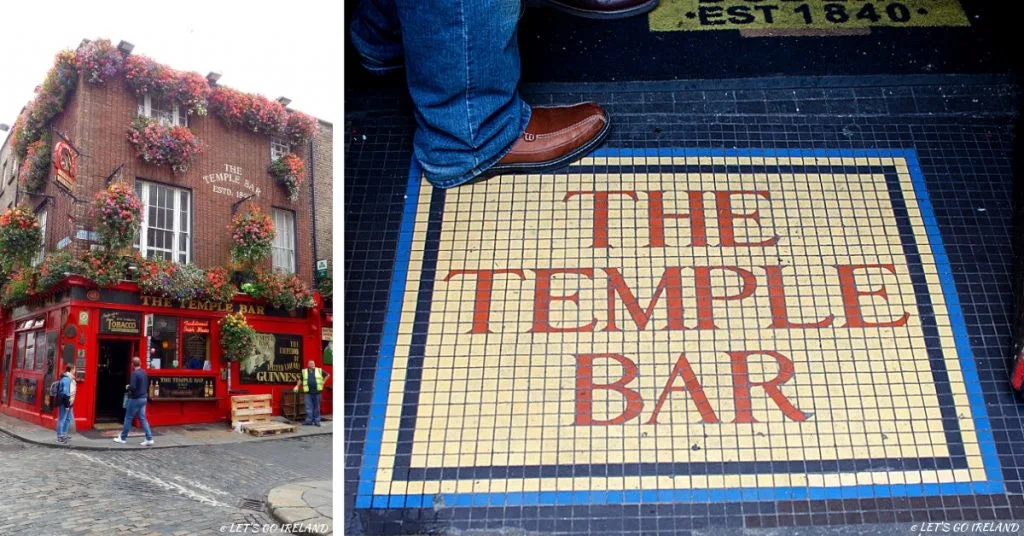
I admit … Temple Bar is probably a rather unusual attraction on this list. Nevertheless, I think that you should visit this area with its pubs and restaurants.
And here’s why: to put it quite simply, the atmosphere!
This part of Dublin, on the south bank of the Liffey, has a reputation for being an overpriced tourist magnet (and that can be partly justified!).
Keep in mind that Temple Bar does not reflect the true pub culture of either Dublin or Ireland.
Nevertheless, Temple Bar has a very unique atmosphere, which develops its own charm precisely because of the densely populated pubs and restaurants.
In addition, it has so much more to offer.
Up until the 1990s, it was first and foremost the hotspot of artists, musicians and other freelancers.
So even today you can still find the remnants of this cultural quarter in the very fine small arts and cultural centers (e.g. the Projects Arts Center or the Gallery of Photography) and the great Irish Film Institute, which often has a variety of lectures, workshops and film screenings in its program.
Our tip: It is worth it to stroll through the narrow lanes to listen to the musicians (‘Buskers’) on the street or to hear live music in the pubs. Why not even pick up some sort of liquid refreshment while you are there?!
It is best to visit during the day or in the evening, but avoid Temple Bar at night or at the weekends … unless you love this kind of drunken nightlife and the increased risk of being puked on gives you an adrenaline rush. You have been warned!
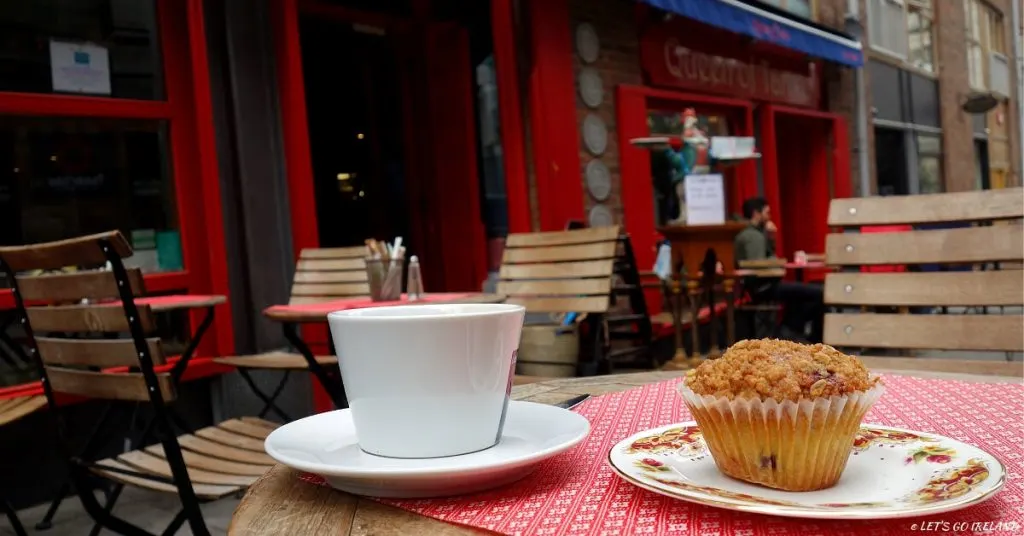
Bonus tip: I’m a big fan of the muffins in the café and patisserie Queen of Tarts at Cow’s Lane. They’re so incredibly juicy! Definitely stop by !!
National Museum of Ireland – Museum of Archeology
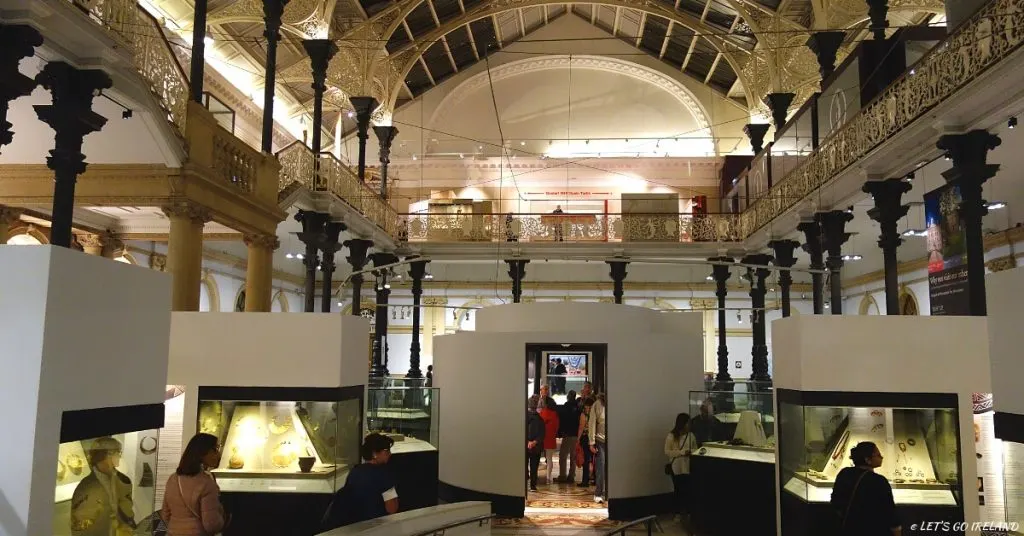
The Archeology Museum is one of four museums of the National Museum of Ireland and I have really fallen for its treasures.
(The entry is free too which compensates your wallet for the expensive entry into the Guinness Storehouse).
Conveniently located in the city center (on Kildare Street, next to the National Library), the museum is the repository for all of Ireland’s archeological objects.
Outstanding examples of artifacts from prehistoric Ireland (ca. 7000 B.C.E.) to the late Medieval period are on display here.
Some of the most well-known items include Ogham stones (these are large stones with carved lines which represent early written script in Ireland), the Tara Brooch, and the Ardagh Chalice to name a few.
There is so much to see here, it is definitely possible to wander in here for hours (as I have on many an occasion!).
My favorite exhibition is Kingship and Sacrifice, which sheds light on the Celtic Iron Age.
Here one of the main highlights are the well-preserved bog bodies (warning – leathery, parched human remains are not for everyone!).
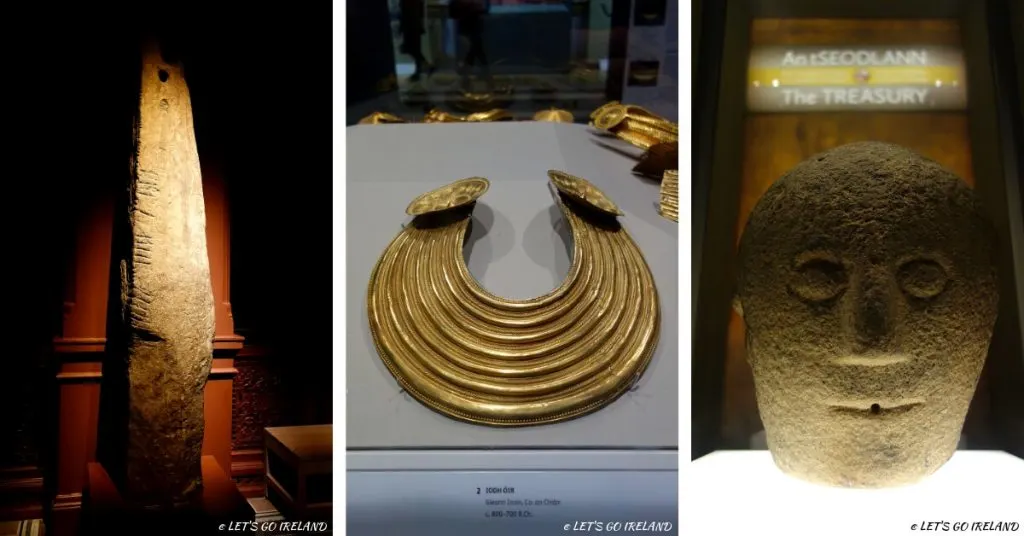
The Viking Exhibition and “Ór – Ireland’s Gold” exhibitions are also very impressive.
Here you can get a clear impression of how advanced the metal work skills of the Celts were.
Emer is a particular fan of these Celtic treasures, some of which have been accidentally rediscovered in bogs in recent times.
Our recommendation: Plan at least two hours for your visit if possible. There are just so many great artifacts to discover and remarkable insights into the Irish past. By the way, the museum is closed on Mondays.
Kilmainham Gaol – The Historic Prison of Dublin
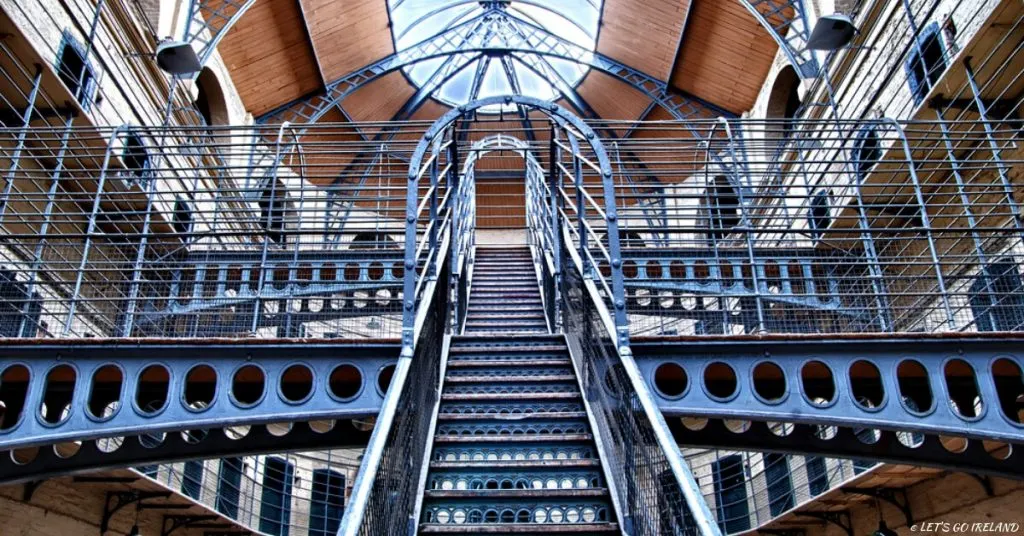
A visit to Kilmainham Gaol (pronounced “jail”) is an impressive journey into Ireland’s recent history where the complex historical threads concerning the Irish War of Independence and the founding of the Republic of Ireland come together. (But don’t worry, even if you are not a big history fan, you can take a lot from a visit.)
Almost all the major freedom fighters and rebel leaders who fought for Irish Independence were imprisoned and some even executed at Kilmainham Gaol.
The list ranges from Robert Emmet and Charles Stewart Parnell to the rebels of the 1916 Easter Uprising, such as: James Connolly and Patrick Pearse.
One of the last prisoners to be imprisoned before the jail was closed was Éamon de Valera, who later became the first president of Ireland.
Apart from the fascinating history, the possibility to see the interior of a classic old prison and to imagine how inhumane the lives of the inmates must have been is a unique experience in itself.
In addition, Kilmainham Gaol has been used as the filming location for many famous films such as “The Italian Job”, (1969), “In the Name of the Father”, (1993) or “The Wind that Shakes the Barley” (2006).
Even series such as, “Ripper Street” for example was shot here and the U2 music video “A Celebration”.
Our tips: Book your tickets if at all possible 1-2 days in advance, because you can only visit as part of a guided tour and these tours are often fully booked.
You can book your tickets here. Alternatively, turn up early on the morning you want to visit and hope that you will be able to get a ticket for that day. The tours generally last about one hour.
EPIC Museum – The Irish Emigration Museum
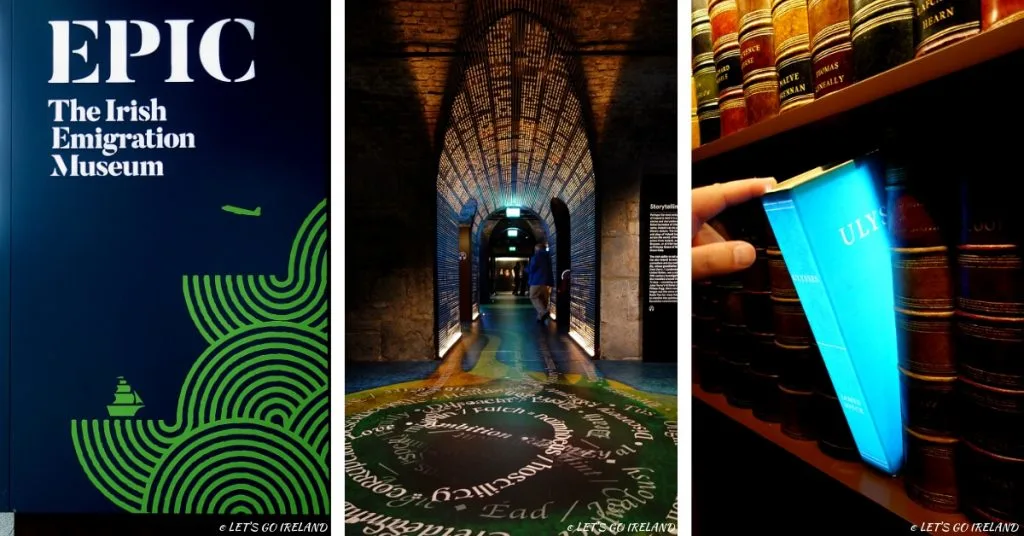
This museum is an absolute must! The EPIC is not only one of the newest highlights that Dublin has to offer, it is probably the best.
It does not matter if you’re Irish or not, the Irish Emigration Museum has a stunning interactive exhibit (it’s the only museum in Ireland whose exhibition relies entirely on digital imagery) that examines the impacts of Irish emigration both at home and abroad.
So, if you’re interested in how emigration has affected Ireland, and how Irish emigrants have influenced the world (e.g., Henry Ford, Riverdance, U2, or James Joyce), you should visit the EPIC Museum.
No matter how old you are, the interactive games where you can learn Irish dancing, choose your favorite Irish villain from history, or experience a “talking” library are just a lot of fun.
No wonder that the museum has already earned a large number of prizes and, through its new didactic museum concept, puts some of the traditional state museums under pressure.
Time saving tip: Since there are a lot of touch screens, interactive games, etc., take a few hours or pick out the highlights that suit you and otherwise move on to the next exhibit, if you don’t you will spend hours here!

After your trip to the EPIC, it is possible to also visit the Irish Family History Centre.
Here there is lots of information and experts are also on hand to help you discover more about your ancestors, regardless of whether you already have a lot of information or are just starting your search.
You can even book a private consultation with a genealogist to help you. Why not check it out? Ireland is a small place; you never know who your cousins might be! (Don’t forget to purchase a combined EPIC and Irish Family Centre ticket!)
Authentic Irish Pubs
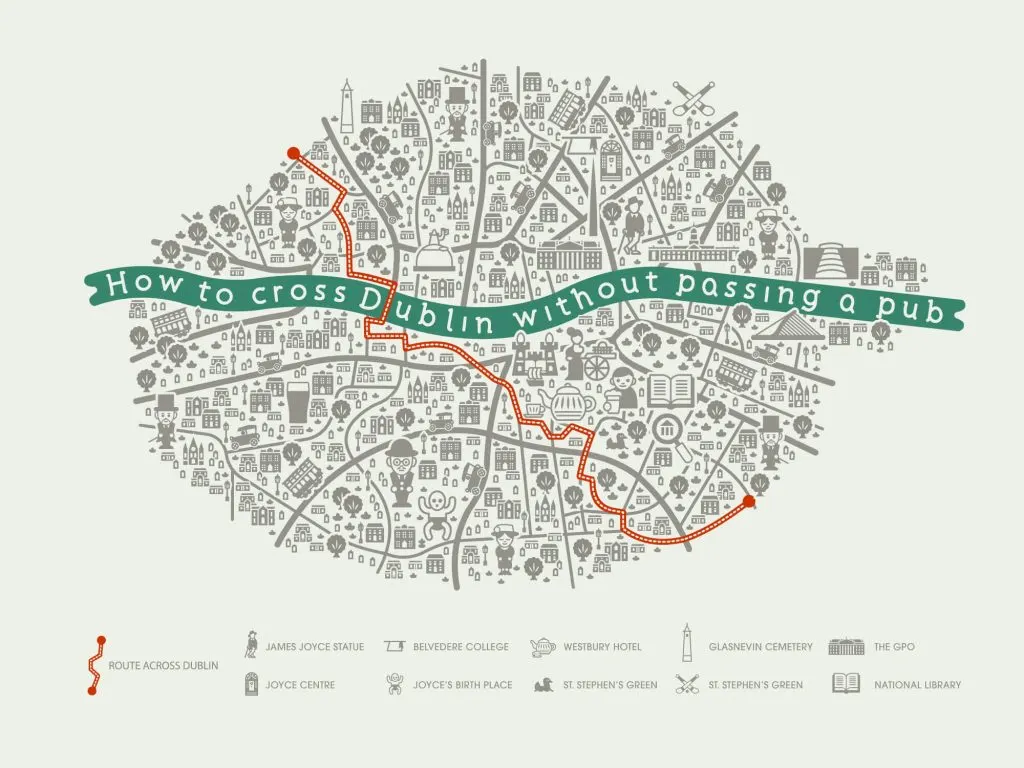
Certainly, visiting a few pubs is on almost every Dublin to-do list. In James Joyce’s Ulysses (1922) the main character Leopold Bloom muses that it would be a good challenge to cross Dublin without passing a pub. It’s almost impossible … every second corner has a pub.
But not all pubs are alike, some cater more for the tourist market, while other are focused more on their local clientele.
Personally, I would rather avoid the pubs in Temple Bar, unless there is good live music being played.
Those who like something authentically Irish should try to find pubs that are not full of tourists (which can be difficult at times!).
Here are 4 recommendations for pubs that I have come to appreciate and that are not on every tourist radar:
- The Bernard Shaw: A quirky pub for students and lovers of alternative culture and music near the Grand Canal. The double-decker bus in the garden offers not only seating, but also good pizza!
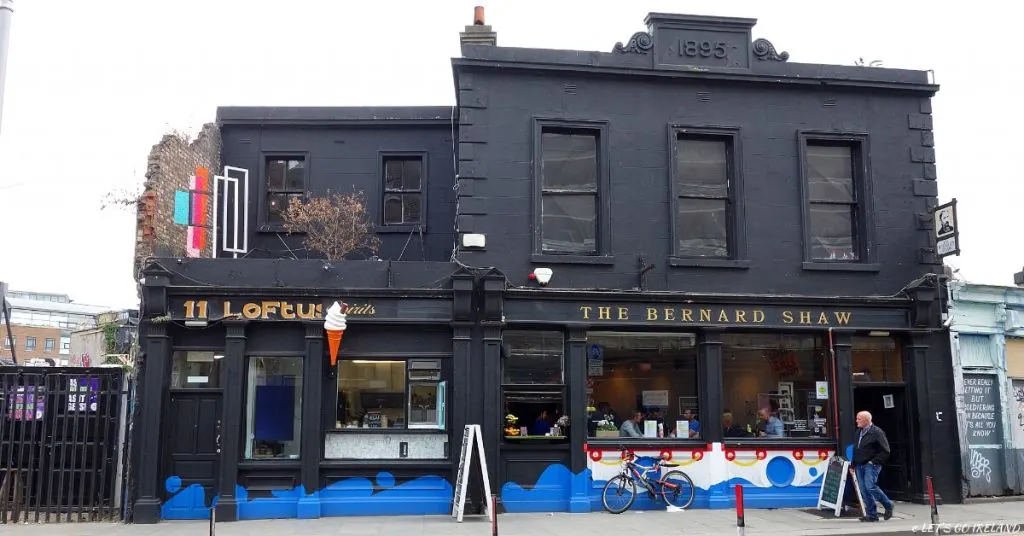
- John Kavanagh (“The Gravedigger”) next to the Glasnevin Cemetery: This is one of the oldest family owned pubs (6th generation) and it is said that there was a special gate to the cemetery just to serve the gravediggers.
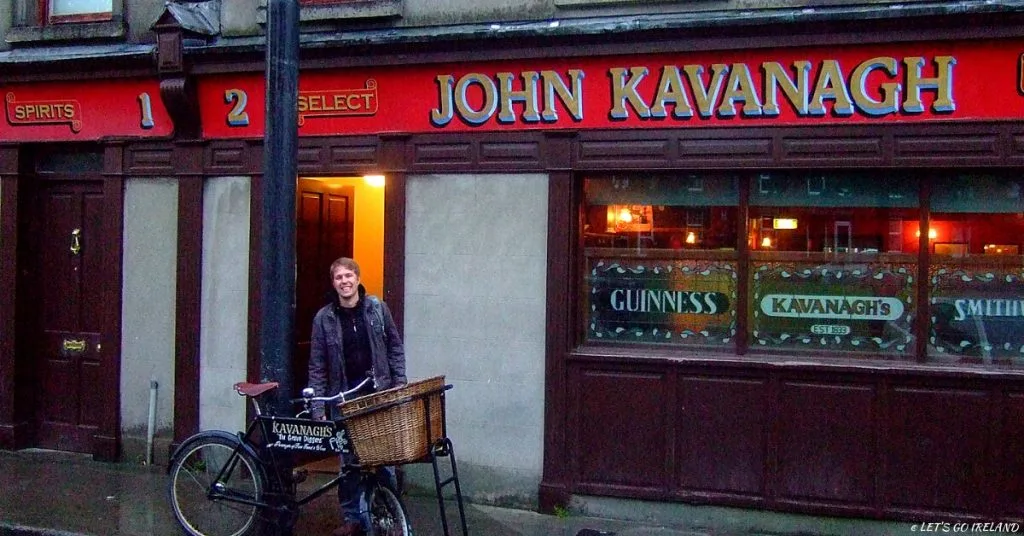
- The Ginger Man: A really cozy Irish pub with fair prices, lots of locals and very good burgers. If you like traditional, honest and cheap, you should definitely visit this pub.
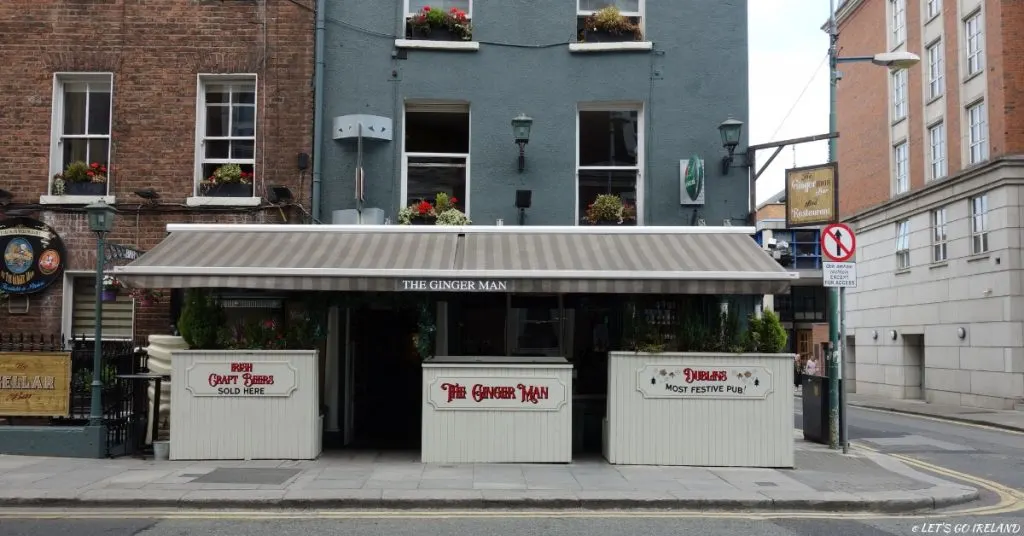
- Kennedy’s: This pub is similar to The Ginger Man with its quaint style without much fanfare. Here you meet scientists from Trinity College or Dubliners, who come together for a beer after work. Kennedy’s is a great spot if you want a friendly, uncomplicated atmosphere.
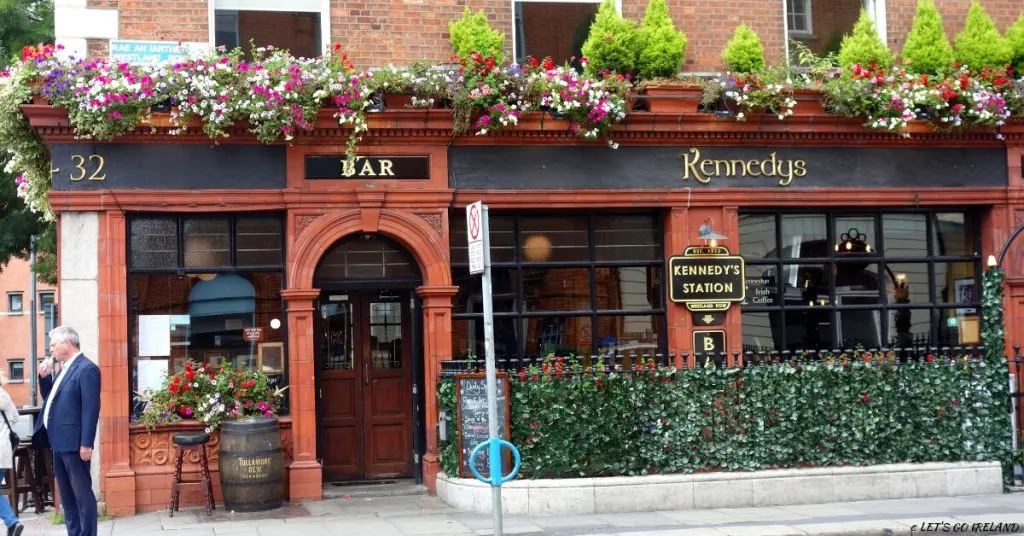
Did you find this post useful? Save it for later on Pinterest!
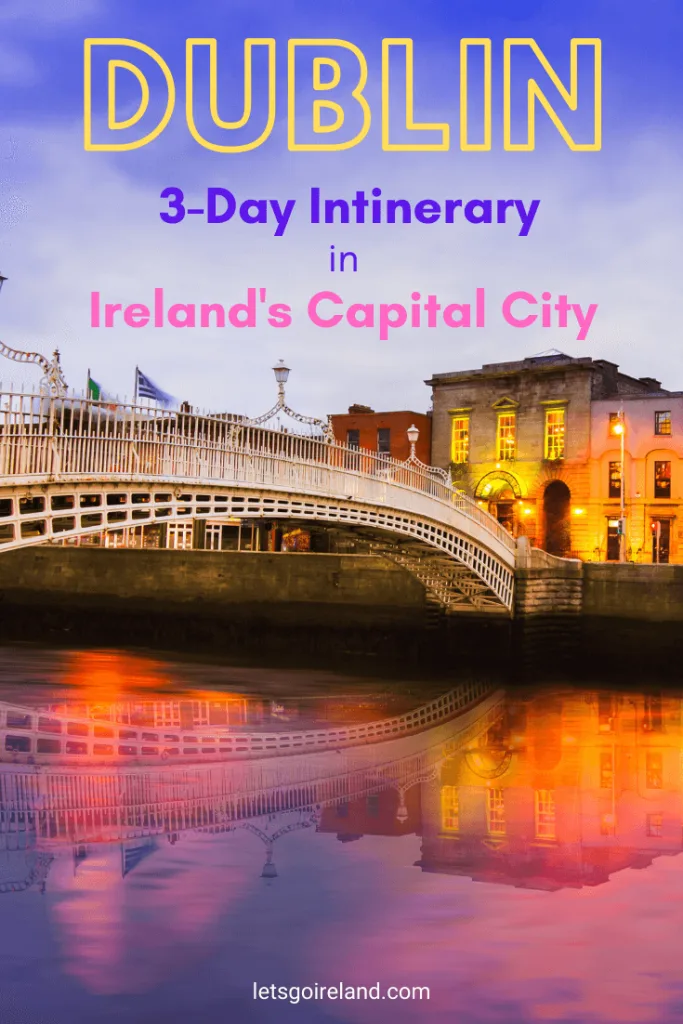

(Irish and Celtic Culture Aficionado, Literature Buff)
Nils Beese co-founded LetsGoIreland.com driven by his love for Ireland’s rich culture and captivating Celtic traditions. Holding a PhD in Irish literature, he’s spent time in Dublin and Cork, immersing himself in local tales and traditions. As a lecturer and guide, Nils seamlessly blends his German roots with his deep appreciation for Irish and Celtic culture. Through his writings, readers are invited into the vibrant and enchanting world of Irish stories and Celtic lore.
